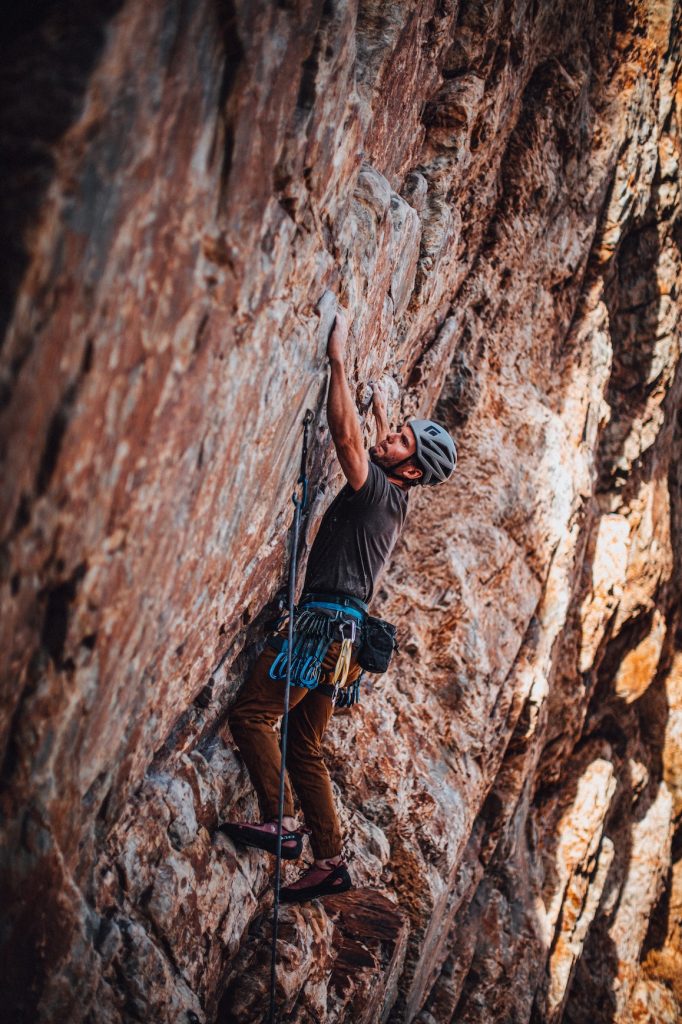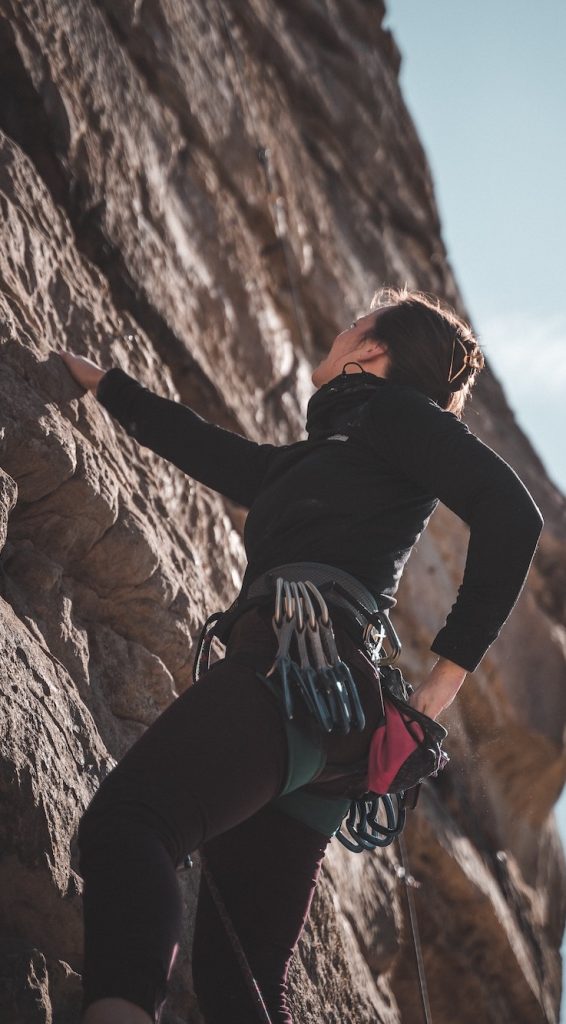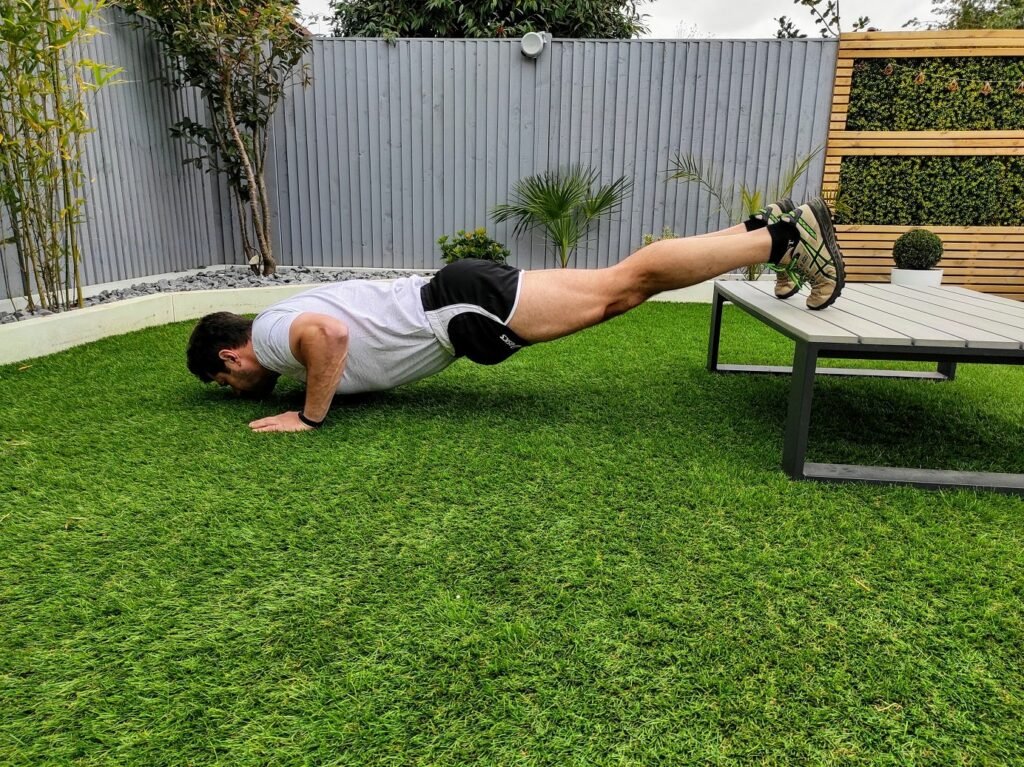The best way to hang while rock climbing is by positioning your feet and body so that you hang as little from your arms as possible. Then, put pressure on your feet, press your hips to the wall, engage your core, pull your scapula down and back so that there’s tension but without forcing it, extend your elbows, and finally, while pulling the minimum amount necessary to hang stable from the holds available to you.
That’s the quick version.
In this article, however, I’ll dissect each of the parts of hanging while rock climbing, so you understand how to generate the right tension in the right place.
We’re going to start bottom up. So, let’s talk feet first.
1. Positioning the Feet
It depends on the direction you’re moving towards and if you climb frontally or laterally (flagging) which part of the forefoot is on the hold. Either tip of the toe, inside, or outside. If you have positioned your foot appropriately you can either let your heel sink in or press the heel up through your toes. For better friction and composure, it’s best to let the heel sink in when resting or standing on a hold. If you need to reach far though, it might be necessary to press your heels up.
If you’re stressed, standing high above a bolt, you’re likely not sinking your heels entirely. This can generate a sense of instability which feeds into your already stressed state of mind. A conscious focus on the position of your feet and letting them sink all the way can therefore help to calm your mind and body.
2. Positioning the Hips
The closer your hips are to the wall the better your center of gravity. These are ways to get your hips closer to the wall:
- Bending the knees to frog position
- Flagging
- Heel hooking
- Toe hooking
- Dropping your knee

3. Tensing the Core
It’s easiest to brace your core when hanging during a climb if you manage to position your feet well and get your hips close to the wall. Because with your feet well-set you can press through your toes to generate tension in your legs. This will help to squeeze your glutes which in turn provide a stable base for the core muscles. The more your body is a fluid brick and less a sack of potatoes, the better. Fix points help to generate tension while loose parts make it hard and energy-consuming.
For optimal tension in the core, you want there to be air in your belly, pull your belly button slightly inwards while extending the spine i.e. pressing from the front and back at the same time toward the center of your abdominal cavity.
Still, if your feet, hips, scapulae, and arms work together well your core tenses automatically.
4. Activating Scapula Musculature
The scapula stabilizers are the ascending trapezius and the serratus anterior. The former is activated by pulling your scapula down while the latter is activated by pressing a straight arm against the wall. While climbing you should only worry about activating the ascending trap. If you have never done this before or have muscular imbalances in the shoulder girdle, this might be hard to do at the start. It’s easiest to start practicing this movement with your arms beside your body.

Once you get this movement dialed in you can start loading it with exercises like “A”, “T”, “Y”, Ring Rows, and Scapula pull-ups. And of course, by climbing easy routes and focusing on your scapula position when hanging from holds. Start easy, and work to harder grades once you can climb entire boulder problems or routes with perfect scapula setting.
Remember, you need tension around the scapula. It’s not necessary to force it down and back.
Ah, and yes, why is this scapula setting so important?
Because the better your scapula is positioned the easier it is for your shoulder muscles to stabilize the upper arm on the glenoid. It’s the same principle as before. The more stability you generate a level before the easier it is to generate force in the joint after.
5. Extending the Elbows
When you hang while rock climbing most of the time it’s best to extend your elbows because this saves energy. In some cases, though, it might be less energy-consuming if you flex the elbows when this brings your center of gravity above the foothold which then allows you to relax better.

6. Hang Loose
Hanging loosely from your fingers while rock climbing prevents over-gripping and thus conserves energy. The idea is to always use the minimal force necessary to hold on to the rock safely and securely. The more you climb the better you’ll be able to manage this. Also, the more you train on a project the more efficient your nervous system will get at generating the right type of tension for the holds on the route.
7. Conclusion: Hanging while Rock Climbing is More Than Just Hanging
The beautiful thing about rock climbing is that it requires you to use both your body and mind. And that hanging while rock climbing involves the whole body, not just the fingers and the arms. The better you position your feet the more tension you can create in the hips, this, in turn, engages the core which generates a strong fix point for the shoulders that can help you to hang loosely from your fingers. Fascinating. Now, go try it!

